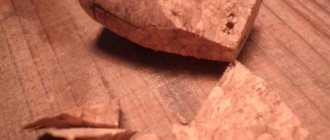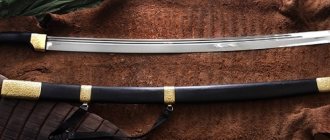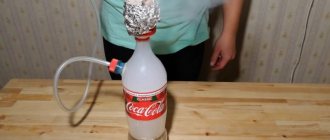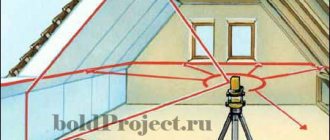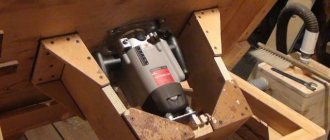Unnecessary into necessary: where to use an old toothbrush
Lovers of sparkling cleanliness are offered an effective way to clean the seams between tiles - a very problematic place! However, removing dirt from such hard-to-reach places is easier than ever: we cut off the handle of the brush, and attach the remaining part to the screwdriver with the bristles facing out.
If there is no screwdriver, then the small brush head will still work properly, only with the help of your efforts
This device can be effectively used for cleaning dirty shoes, stubborn stains on carpet and clothes. After treatment with this attachment, the mosquito net on the window and the hood above the stove will become pristinely clean.
A regular old toothbrush can be sent to a new service - its bristles will work great in the kitchen as a vegetable cleaner.
Why don't I throw away my old toothbrushes? They can be used to make useful fishing attachments
This is how you can use an old toothbrush for fishing.
When fishing in places with a lot of vegetation or snags, there is a high risk of losing your bait. However, these are the places where the most fish are found. In order not to waste expensive baits, you can learn to make them yourself; besides, their catchability, as practice shows, is not much inferior to purchased ones. This article will discuss how to create a wobbler from an old toothbrush. It's easy, fast and practically free.
We cut the toothbrush into blanks using a hacksaw or a heated stationery knife. We make a cut in the head part of the workpiece, heat the resulting plate and bend it, forming a blade from it.
You can make two homemade wobblers from one handle. For this you will need a minimal set of tools - a hacksaw, a stationery knife, a lighter and a paper clip.
Material selection
Most often, wood is used for spinners and wobblers. This material is easy to repair, process and has proper buoyancy. For independent production you will need a minimum of tools that are available in any home workshop. Other materials can be used.
Styrofoam
A foam wobbler is used for fishing at the very surface of the water. This is true for places with abundant vegetation. Polystyrene foam has good buoyancy. The factory model requires a minimum depth of up to 20 cm, which can affect the quality of fishing.
Manufacturing recommendations:
- choose foam with the maximum density;
- for external processing use fine-grained sandpaper;
- When installing cutters and blades, special glue is used;
- A small piece of lead is mounted in the middle part for shipping - slight deepening.
The advantages of these baits are that they can be quickly made, repairs are done while fishing. It is enough to pour glue on the damaged part of the structure and wait for final hardening. This is the best pike wobbler for summer fishing.
Tree
The classic bait was originally made of wood, until it was replaced by plastic models. The blank is made from any available piece of wood. For accuracy, you need to use patterns. It is better not to make unhooks for wobblers with your own hands. It is recommended to purchase factory ones to avoid twisting of the fishing line.
Tips for choosing material and manufacturing:
- The easiest way to make a wobbler is from cork or other soft wood - cedar or pine.
- A complex bait with sound chambers is made from two parts. First, one part is made and a mirror one is made based on its sample.
- An engraver is used for fine work.
Particular attention is paid to glue. It should not dissolve in water, while at the same time giving the connection the required reliability. To repair, you will need to disassemble the bait, which often leads to its breakdown. The solution is to make several similar models for quick replacement when fishing.
The video provides detailed instructions for making wobblers with your own hands:
Resin
If you need to repeat the shape of the factory model as accurately as possible, it is recommended to make a wobbler from epoxy. To do this, you will need a mold made of hard plasticine or clay. An imprint of the bait is made on the plate on both sides. These recesses are subsequently filled with epoxy resin.
Before making a wobbler, you will need to perform a number of preparatory steps:
- Select a mold material with minimal moisture content. After making the impression, it is advisable to freeze it to preserve the contours.
- Filler composition. ECP or EDP are used as a basis. You need 9 parts resin, one part glue and 8 parts fine shavings.
- For floating models, after filling one part with resin, a wooden insert is installed.
The final stage is grinding and installation of the gear. It is first tested for buoyancy in a container of water. If required, add a weight. Repairing such a bait is impossible.
Wobblers made from brushes do not have the proper characteristics. Advice from experienced anglers is to spend more time and money to make a truly effective bait.
Made from foam or plastic
Foam or plastic are suitable for quickly making a disposable, but effective bait. The resemblance of an insect, for example, a May beetle, is cut out of the material using a knife or hacksaw blade.
Important! The credibility of the bait is not the most important factor; good presentation and realistic wiring bring good luck.
The cut piece is primed and a rigid wire is threaded through it, forming a fastening loop and an eyelet for mounting a tee. This option is excellent for making a surface bait known to spinning anglers as a non-hooking wobbler.
Fishing for a condom
The process of making a homemade lightweight wobbler from a toothbrush: 1. First, you need to heat the blade of a stationery knife over a fire and cut off the necessary part from the toothbrush. You can see the details in the photo. It is better not to throw away all the remaining parts of the brush, because you can use them to make another bait.
First, I sawed off part of the handle to the desired length. Its big advantage is that the handle is initially symmetrical, so when creating a bait you only have to process the head of the future wobbler. The plastic turned out to be hard, so the work required a file, a metal file and sandpaper.
Making the body of the bait is not particularly difficult. Now it's the blade's turn. Any plexiglass or transparent plastic 0.5-1 mm thick is suitable for it, and there are always a great variety of products made from these materials at hand. In my case, this is the lid of the box. We draw the future blade with a marker, taking into account the body size of the future bait, and carefully cut it out with a metal file. Then we process the blade with sandpaper and finally adjust it.
After a fisherman has visited a body of water that is unfamiliar to him, overgrown with algae and grass, and has lost a couple of good baits, the desire to fish in this place is cut off. In this case, you need to turn your attention to homemade baits, which are not expensive to make and you don’t mind losing. Often in overgrown reservoirs there are a lot of fish that hunt in such places and are probably not averse to eating artificial bait. Today we will make a homemade ultralight wobbler with our own hands, which is easy to make and quite catchy in reservoirs, especially well attracts the attention of striped bass and small pike. To make a homemade wobbler from a toothbrush, you will need the following material: • an old used toothbrush; • a paper clip; • swivel clasp;• triple hook with winding ring;• double hook with winding ring;• red or yellow beads for eyes;• pliers;• utility knife;• lighter.
First way
There are several ways to make a wobbler from a toothbrush with your own hands, the first one is the easiest to create.
What you will need
To make bait from scrap material you will need the following:
- beads of various colors;
- swivel clasp;
- matches or lighter;
- stationery knife;
- Super glue;
- small nail;
- triple and double hook with winding ring;
- pliers;
- clip.
And the most important material will be an unnecessary toothbrush.
Manufacturing process
It doesn’t take a lot of time to create, since artificial bait is made in the most basic way:
- First you need to create a blank - a wobbler. Using a hot stationery knife, a piece of the required length is cut from the toothbrush. This action can also be done with a hacksaw.
- The next stage is the design of the bow - the shoulder blades. This element is very important, since it determines how the wobbler will penetrate deep into the water. The nose part is cut out with a stationery knife. Then take a lighter and use fire to burn all the unevenness and roughness of the bait.
- Now the installation is done. To do this, the nail is heated with a lighter and a hole is made along the workpiece. Next, the paper clip is unbent. It is inserted into the hole, and loops are made at its end; this will require pliers.
- At the fourth stage, a swivel is attached to the bow, a fishing line will be attached to it, and a double hook with a winding ring will be attached to the tail. In the middle of the bait, another hole is made with a nail heated over a fire, where a loop is inserted, and a treble hook is attached to it. All hinge exit points are treated with superglue.
- At the final stage, beads are glued, which will be the eyes of the bait.
The wobbler made from a toothbrush is ready, all that remains is to throw it into the pond, and then return home with a big catch.
DIY wobbler made from a toothbrush
When fishing in places with a lot of vegetation or snags, there is a high risk of losing your bait. However, these are the places where the most fish are found. In order not to waste expensive baits, you can learn to make them yourself; besides, their catchability, as practice shows, is not much inferior to purchased ones. This article will discuss how to create a wobbler from an old toothbrush. It's easy, fast and practically free. This small wobbler belongs to the ultralight category; with its help you can seduce such predators as perch and small pike.
Loading
By themselves, toothbrushes have positive buoyancy , but after they are loaded with winding rings and tees, they become sinking. In order to make them sink strongly, which is sometimes necessary, you can make a small hole in the body of the wobbler into which a lead pellet is inserted, and the insertion site is sealed.
You can also glue a small lead piece to the belly side of the wobbler. Other anglers want their wobbler to float. In this case, cut out a thin strip of polyurethane foam and glue it to the back of the wobbler with the same superglue. After experimenting, you can even make a suspended wobbler.
Advantages and disadvantages
A bait made with your own hands has its pros and cons, they are worth considering to find out whether it is worth spending the effort to create it or not.
A homemade bait has many significant advantages, of which I would like to highlight the following:
- availability of the material, even if you don’t have an unnecessary toothbrush at home, you can always buy it in a store for a low price;
- the angler has the opportunity to make bait at his own discretion;
- simplicity and ease of manufacture;
- selection of materials for homemade products;
- the finished product in total has a low cost.
The only disadvantage is that the size of the brush is limited, and therefore it is impossible to create a larger bait.
With such bait you won't come home without a catch!
There is nothing more pleasant than catching a predator with a homemade product made with your own hands. After all, the process of making artificial bait is no less enjoyable than the fishing itself.
Second way
The second method requires a little more time to produce artificial bait.
What you need
The key material in the process of creating bait will be a used toothbrush, and then on the list:
- metal wire;
- rasp;
- sheet plastic;
- sandpaper;
- hacksaw;
- tees with a winding ring;
- Super glue;
- pliers.
You will need beads that will become the eyes of artificial baitfish.
Adjustment
The final stage of making a wobbler is its adjustment . To do this, tie a wobbler on a fishing line to a whip and begin testing it in a container of water. When tilting the wobbler to one side, use pliers to bend the nose loop in one direction or another until the bait begins to work perfectly.
Expert opinion
Knipovich Nikolai Mikhailovich
Zoologist, hydrobiologist. I am interested in fishing at a professional level.
Interesting! Skilled fishermen make not only wobblers, but also poppers and walkers from toothbrushes. Of course, these baits must have positive buoyancy. Their production requires a certain amount of experience from the craftsman.
Manufacturing
There are two ways to make a wobbler from a toothbrush, respectively, and the baits obtained as a result of using different methods have external differences. The first of them is extremely simple, the second involves a slightly larger amount of work.
The material for the manufacture of this wobbler is a used plastic toothbrush .
First way
Tools:
- stationery knife;
- round nose pliers;
- lighter;
- nail.
In addition, in order to make a wobbler, you will need:
- Steel wire. A regular paper clip will do just fine.
- Winding rings.
- Treble hooks. To reduce the load, doubles are sometimes used.
- Super glue.
Manufacturing process
The wobbler manufacturing process includes the following steps:
- Using a hot utility knife, cut a piece of toothbrush to the required length.
- Using a lighter, the edges of the workpiece are scorched, giving it the shape of a future wobbler.
- A wobbler blade is made with a hot knife in the front part of the workpiece.
- Heat the nail and pierce the workpiece through and through in the longitudinal direction.
- Using pliers, they make loops - the front one for attaching the fishing line, the back one for the tee.
- Approximately in the middle of the workpiece, on the ventral side of the wobbler, use the same hot nail to make a hole into which another loop is inserted for attaching the tee.
- Fix the exit points of the loops with superglue.
- The wobbler is equipped with winding rings and tees.
Second way
This method is similar to that for making a wobbler from wood.
Materials:
- Toothbrush;
- steel wire;
- thin sheet of plastic.
Tools:
- hacksaw for metal;
- file;
- sandpaper;
- round nose pliers.
Naturally, you will need winding rings and treble hooks.
Manufacturing process
- Using a hacksaw, cut the workpiece to the required length.
- Using a file, the workpiece is given the shape of a future wobbler.
- The workpiece is processed with sandpaper to give it the necessary smoothness.
- Using a hacksaw, make a longitudinal cut along the ventral side of the wobbler.
- The frame is made. Having cut a piece of wire of the required length, make three loops - at the front and rear ends of the wobbler and in the middle.
- Insert the frame into the longitudinal cut and seal the cut with superglue.
- A hacksaw is used to make a cut in the nose of the wobbler, intended for the wobbler blade.
- A wobbler blade is cut out of thin plastic. This can even be done with scissors.
- Insert the blade into the cut and seal the insertion site with superglue.
- The wobbler is equipped with winding rings and tees.
A wobbler made using the second method has a more attractive appearance, although the process itself is more labor-intensive. In addition, the master has the opportunity to use blades of different sizes and choose the angle of its location relative to the axis of the bait, achieving the required depth of the bait.
Expert opinion
Knipovich Nikolai Mikhailovich
Zoologist, hydrobiologist. I am interested in fishing at a professional level.
Important! Wobblers made from a toothbrush are small in size and are used when fishing with light and ultralight class gear. Therefore, you should be careful when choosing winding rings and tees, namely their size. When casting and retrieving, the front and rear tees should not overlap.
Run-in
By creating wobblers for trolling for pike-perch, pike or perch based on the bait of a well-known manufacturer, it is quite possible to achieve identical play of the tackle. This result can be achieved if each element was made strictly in accordance with the form of the original.
If small mistakes were made, you can slightly adjust the product during run-in. The play of a wobbler in water is affected by the shape and tilt of the steering wheel. If the blade is wide, the bait plays with a large amplitude, but with a lower frequency. With a large slope of the blade, the wobbler oscillates more, but does not sink deeply into the water.
You should also adjust the position of the top hinge. It has less influence on the play of the tackle, but this element should not be ignored. The vibrations of the bait must be stable. If the wobbler is thrown to the side at high speed, you need to bend the loop at the front in the opposite direction.
But the steering wheel must pass along the axis of symmetry. After running-in, all parts are disassembled, dried and prepared for final assembly.
Do-it-yourself wobbler made from a toothbrush - a simple and catchy bait
Currently, there is a trend towards making your own spinning lures. This is especially true for Russian fishermen.
On the one hand, this reflects their high creative potential and ability to work with their hands, on the other hand, their reluctance to spend money on buying expensive branded baits, especially since homemade baits often turn out to be more catchy than those purchased in a store.
Wobblers, spinners, spinners and some other baits are made at home. A do-it-yourself wobbler made from a toothbrush is a vivid example of how, without spending almost a penny and with a minimum of effort, you can make a completely working bait.
Toothbrush wobblers are small baits used primarily for catching perch.
Hunting and fishing in the Tver region
- home
- Hunting
- Fishing crafts
- Tips for the hunter
- Geese hunting
- Duck hunting
- Hunting crafts
- Hunter's workshop Gun drawings
- Helping a dog with hunting injuries
- Mammals
- Domestic weapons Company TsKIB SOO branch of State Unitary Enterprise KBP
- "Izhevsk Arms Plant"
- FSUE "Izhevsk Mechanical Plant"
- Hunting grounds of the Tver region
- Public lands of the Tver region. Maps, descriptions of borders.
- Map of the Tver region in 1 cm - 1 km
- APPLICATION, mining permit in the UOP download
- State duty in UOP download
After this, tees are put on and that’s it. It takes no more than an hour to make. The shape is perfect, there is nothing superfluous. The blade is level and does not spin the wobbler. The wobbler floats well and flies well. Has sufficient weight for long casts.
No duplicates found
and what is not clear? fuck, fuck, bang and you're done
it's more like a trolleybus made of bread
No, not that. No plastic bottles are used here.
At one time I was engaged in the manufacture of wobblers for personal use, a very exciting activity, I tell you.)) The game depends on many factors (weight, shape, blade, place where the “pinocchio” is loaded). But what a pity it is to leave them in the river lake, it’s just terrible. )))
The idea of the designer, not the engineer, is visible.
These threesomes will be pulled out of the brush at once.
That's what I'm talking about.
Insert a connection inside the wire
this is good, but they perform their function, hesitate? I just bought Chinese ones and they lie on their sides and that’s it))
How to insert? Make a video or detailed photo instructions, otherwise it’s like in that joke about “Secret drawings and finishing with a file”
hi, do you mind if the post is moved to the fishing community? https://pikabu.ru/community/rybalka,. If not, then you will need to call a moderator and ask to move it
The photo was not taken on Asus, by any chance? I have the same stripes in the photo ;(
I don’t care if this wobbler won’t play, there’s always random buoyancy, etc. What’s more offensive to lose, a Chinese one for 20 rubles, or your own, which you’ve been fussing over for an hour?)
Drank a long post with instructions))
Fuck the post about wobblers made from toothbrushes, if it’s easier to go to the store and choose normal lures for every taste, size and budget
Well done, standing ovation
the author drank a long post, and post it to the fishing community
Category: crazy hands
Normal. How interesting are the hooks and the fishing line ring attached?
That’s why the creative guy screwed up))) the author is credited.
On old brushes, the elastic band deteriorates and becomes covered with mold, I wouldn’t fish with one of these. there are some new ones here
I'm not saying that I brush my teeth with this brush, I left it for other needs
and get rid of fungus from the bathroom
I think the author sanded it all down
and the spoon can be replaced with a teaspoon!
but I also don’t throw away my toothbrushes, arguing that they will be useful to clean my shoes there, which is not gold, the toilet is in the zone. Fuck! one dick accumulates in a heap and I throw away only the older and splayed ones, why the hell do I clean them
2 crankbait, wolfer and shad?
instead of a worm when fishing, I don’t know how it can be more capacious
any wobbler pops up
Stick one of these up your ass and turn it around
That year I went fishing. I tangled the line, stuck the hook in my finger, then fucked two spoons, didn’t catch anything, threw the spinning rod into the car, then sat in the sand. Take a rest and relax, they said.
Wobblers is too ambiguous a name. Who knows how to look for them on the Internet.
Author, maybe you can write down how to make a donka. Cheap, cheerful, fast and reliable?
As far as I remember the weight and material of the toothbrush and judging by the “face” of the bait, these are surface poppers, not wobblers.
Top left - yes. And you understand, it’s even nice to talk) And the bottom left one is, in principle, a wobbler, albeit a superficial one. But I don’t agree about the little things. The blade is much larger, but such comrades as poppers work.
Ooooh, well done! Give me instructions!
The main thing is not to confuse the purpose.
It would be nice to see how it plays in the water, is there any point in bothering with a non-playing wobbler.
Dad has been fishing for night pike perch from a chair for many years -)) And always with a catch -)
Making a wobbler with your own hands in one go
To make a wobbler for pike you don't need much. The first and most important thing is a toothbrush. The basis of the bait will be its handle. I recommend using Colgate Classic Health brushes. I really liked the shape of the handle and the material. Haven't tried others. But in theory you can take any one. It goes without saying, old, with shabby stubble. I think it is unwise to buy a new toothbrush to make a homemade wobbler.
The list of materials is something like this:
- used toothbrush;
- stainless steel wire 00.7-0.8 mm;
- threesomes – 2 pcs.;
- winding rings;
- the thinnest drill;
- file;
- round nose pliers;
- pliers;
- wire cutters;
- coin (ruble).
I’ll tell you how to make a wobbler from a toothbrush in detail:
- First, we saw off the handle of our toothbrush with a file. I cut off everything after Colgate.
- Next, we drill a hole diagonally from the sawn edge of the handle to the center of the wobbler. Roughly speaking, from the “tail” to the “belly” of our bait. We drill at low speeds, slowly.
- We bend the wire in half the length of the body, plus about a centimeter for the rings. We push the wobbler inside with a tool. If you don't have stiff wire at hand, a paper clip will do. Straighten it and move on.
- After the metal frame is inside the fish, we use round pliers to make rings. We bend it well. It is advisable to correct a sharp edge with a file.
- Now we need to make sure that our wobbler goes deep and plays normally. In other words, we undertake to insert a spatula into it from the “nose” side. But not anyhow, but from a certain angle. Let's look at the diagram:
- We make a cut with a file directly under the “nose” of the bait at an angle of 45 degrees.
- We saw off or cut off a third of the coin with stationery scissors. Let's try how it fits into the cut. If necessary, deepen it.
- Pour epoxy glue inside the cut. Insert a homemade blade-coin.
- All that remains is to do the simplest thing - install the winding rings, and then hang the tees on them.
I hook the leash to a large ring made of thick fishing line. I thread the fishing line through the hole at the end of the brush and tie it. More precisely, not brushes, but a full-fledged wobbler. Now we can safely call it that.
Unusual bait
It came down to a small but important step, and this is setting up the wobbler so that the unusual bait plays and goes deep the way we need it. She needs to insert a spatula to penetrate into the nose. We make a notch under the nose of the bait with a saw, at an angle of 45 degrees, then you need to insert a suitable part into this slot, and for this a plastic plate or coin is best suited. You will need to saw off a third of its part from the coin and try on how it will fit in the slot. Once you are sure your parts are correct, you can attach the coin with glue. It's much easier with plastic, although some sense of balance may be lost...it's up to you. In any case, the bait will turn out to be unusual.
What are the advantages of making them yourself?
All spinning players can be divided into two conditional categories according to this gear:
- People who prefer purchased gear because they do not want to spend extra time and effort on something that, in their opinion, will not pay off.
- Those who make wobblers with their own hands, arguing that they have great functionality and the ability to customize such tackle to the specific requirements they need.
Materials
To create homemade wobblers, you must first pay attention to the material, otherwise you will not succeed in catching gear. The most problems arise with the body of baits, because here you need experience or the help of a mentor, as well as a lot of theoretical knowledge. For the production of a wobbler, wood is the best choice; it is easy to process and floats well with proper coating. But linden wood, despite the wide variety in the choice of this material, produces the most legendary gear.
Also, good homemade wobblers are made from spruce, and many experienced fishermen manage to adapt an unnecessary balsa float as a useful equipment.
You can make a wobbler from foam plastic or even from plexiglass, it all depends on the purposes for which you need it:
- Polymers are more convenient to process, but do not last long, but their colors are always colorful and often there is no need for additional protective coating.
- It is easy to create a composite wobbler from polystyrene foam, while production from other materials will require a lot of effort.
- For plexiglass, it is necessary to adjust the tools for special needs and experience in processing such material, but the tackle will turn out to be not only strong, but also beautiful. In some cases, such homemade products are even displayed on the shelf as works of art.
A box for wobblers is also made from wood, where it is convenient to store purchased products. The blades, one of the integral parts that allow you to regulate the depth to which the tackle is immersed, are best made from polymer materials. Particularly popular among craftsmen is polycarbonate, which has high strength and survivability, with low processing complexity.
Fishing for pike from the shore
I recently lost my successful trout-shaped wobbler while fishing. But there was one to which the fish did not react at all. I remembered that my wife had gel polishes and a UV lamp for nails, and puzzled her with the creation of a similar wobbler) Since mine respects fishing, she took up the task with enthusiasm. Here is the process and the result)))
Well, the result of the fishing itself) 3 fish were almost lost. One was one and a half times larger than the one caught.
Before painting, coat the wobbler with any white primer enamel. When the enamel is dry, we begin painting the wobbler. I use artist's oil and acrylic paints. Oil ones are better, they have more contrast, but they take about three weeks to dry. I apply the paint with a foam swab. There is a rule: first apply light colors, then dark ones.
We do not move the swab over the wobbler. The design of the wobbler depends on the artistic abilities of the master, but, by and large, this point is not at all critical. Surely many people have more than one fighting wobbler from which pikes have torn off all the paint, but it is more alive than all the living ones and continues to catch fish regularly. When the top layers of paint are dry, you can glue or finish painting the eyes.
Then we move on to varnishing the wobbler. For varnishing I use yacht gloss varnish. Dip the entire wobbler into a jar of varnish, take it out, and let the varnish dry completely. We repeat this operation 4–5 times. Varnishing is a crucial moment, there is no need to rush. Its durability depends on how well you varnish the wobbler, since it will have to protect itself both from its own tees and from the teeth of pike and pike perch (photos 11, 12 and 13).
Homemade wobblers
Many inexperienced fishermen spend a lot of time figuring out lures and how to make a wobbler with their own hands, analyzing the functionality of purchased ones.
Only after gaining the proper experience can they boast of the ability to make a wobbler with their own hands, but not everyone has so much time and desire to figure it out on their own.
Fortunately, to make such gear you only need basic carpentry skills and appropriate materials. But even if the latter are not there, is it possible to make a homemade wobbler from a toothbrush? And what can you do at home?
Types of wobblers and their characteristics
Before starting the manufacturing process, you need to familiarize yourself with the accepted classification of baits. You can make several wobblers with your own hands for different types of fish and fishing conditions. The design and characteristics are determined in advance.
- According to the nature of their behavior in water - floating, sinking, balanced and surface. Determined by the ratio of the material with and without buoyancy.
- According to the form. The crawler is the optimal wobbler for chub. Various rotational movements are provided by a wide blade in the front part of the structure, and releases are located at the rear. However, due to the complexity of the design, their repair is difficult. A homemade wobbler made from a toothbrush is shaped like a popper. It has a small cut off nose and no blades.
- Length and weight. Depends on the size, weight and behavior of the fish. The recommended length is no more than 15 cm. Weight affects the choice of spinning rod.
Tools
When studying the question of how to make a wobbler, you should pay attention to the selection of tools. They will definitely be found in the arsenal of a home craftsman. First of all, you need to prepare the knife. If its blade becomes dull, it should be sharpened well. Otherwise, it will be difficult to work with any material. The knife shouldn't be big. It is easier to shape the wobbler with a short but strong blade.
Next, you need to prepare a hacksaw for metal, files and needle files. Their profile should be different. To conveniently clamp the wire, use pliers or round nose pliers. To sand any uneven surfaces on the workpiece, you will need sandpaper. It is selected according to the type of body material. For ease of work, the workpiece will need to be held in a vice. These are the main tools. For painting you will need brushes of different sizes.
What to make from old toothbrushes
It is customary to replace a toothbrush with a new one every 3 months, because using old products becomes unhygienic. However, you shouldn’t rush to immediately throw them in the trash; old things can be given another life. We will tell you what interesting and useful things you can do with your own hands from old toothbrushes, and consider several original ways to use these devices at home.
Second life of toothbrushes
How do you use old toothbrushes? We suspect that it is for cleaning and cleaning shoes. Today we will change your perspective on what the second life of your old brushes should be like. In this collection you will find interesting master classes with which you will learn how to make unique accessories from these items with your own hands.
Here you will find great life hacks, crafts for men and purely feminine things. The brush can be used in so many different ways that you will be surprised more than once. Choose the most beautiful one and get down to business as soon as possible!
Bracelet
A bracelet made from a toothbrush sounds strange. But it looks great! We suspect that now you will choose your brushes more carefully.
- bright plastic brush;
- wire cutters or file;
- forceps.
It’s best to take a children’s toothbrush for this craft - you won’t have to shorten it. Choose bright transparent plastic to make the bracelet more beautiful. It is important that the brush does not have rubberized inserts.
Take a pair of wire cutters and remove the stubble. If you have a file, this will make the task easier, because you can simply trim off the excess. Now place the plastic stick into boiling water. It needs to be kept in the pan for about an hour so that the plastic becomes soft.
Remove the former brush from the water with tongs and bend it to form a bracelet. If something goes wrong, immerse the workpiece in water for another 10 minutes and fix it. Just be careful because the plastic is very hot. Then immediately plunge it into cold water to set your toothbrush bracelet in position.
Make some colorful accessories. Together they look even more beautiful. Believe me, no one will ever guess that your bright summer bracelet is made from an old toothbrush!
Wobbler
And this craft from an old toothbrush will appeal to men who love fishing. If you don’t want to buy a wobbler, make it yourself from scrap materials found in any home.
